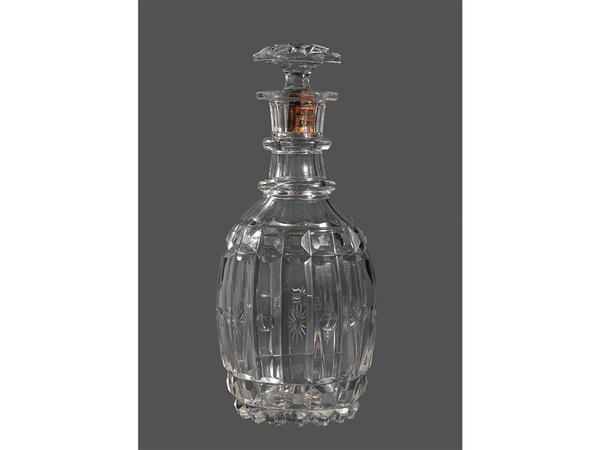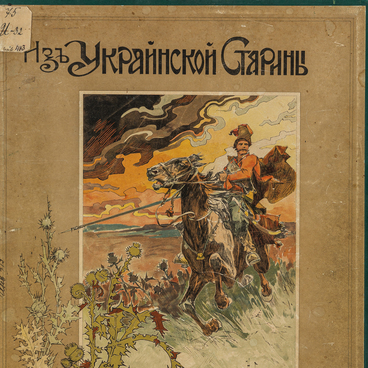One of the first Russian ceremonial palace glass services was Bakhmetevsky. It was made in 1807 at the Nikolsko-Bakhmetevsky Crystal Glass Factory by order of the Court of His Imperial Majesty. A ceremonial palace service was considered to be a set of objects of various purposes made from the same material and with a similar design.
The court dining ensemble included tableware for 70 persons. Among them were glasses for champagne, drinking glasses, rinsing bowls, water pitchers and decanters, champagne and wine shot glasses, as well as Rhine wine shot glasses for white dry and semi-dry wines and rummers — wine glasses made of colored glass. According to court rules, the Bakhmetevsky service was used in the Winter Palace, Tsarskoye Selo, Peterhof Palace and Kremlin Palace along with Arabesque and Gothic porcelain services.
By the 1840s, the Bakhmetevsky service had no original items remained, but the rules permitted to constantly replenish the dinner set. Items ordered by the Court Office were made at the Imperial Glass Factory until the 1890s.
The Imperial Glass Factory is one of the oldest factories in Russia. Its history began back in 1777, when the Saint Petersburg State Glass Factory located in the village of Nazya (now Naziya) was taken into ‘timeless and hereditary possession’ of the prominent statesman Grigory Potemkin. In 1783, Potemkin moved the factory to his estate in settlement of Ozerki, the Saint Petersburg Governorate. The factory started manufacturing illumination devices and unique items according to the projects of famous artists, less often — tableware for sale. After Potemkin died in 1792, the factory was transferred to state-owned management and renamed as the Imperial Glass Factory. In 1890, it ceased to be an independent plant and became a part of the Imperial Porcelain Factory.
The barrel-shaped decanter, displayed in the museum’s collection, is made of crystal clear glass. Its “shoulders, ” body, and bottom part are decorated with wide faceting. The vertical facets end at the same height with V-shaped cuts. The faceting is combined with carving “stars” and “dimples”; the facets’ carvings alternate. The body of the decanter is crowned with a high neck, two raised neck rings, a bent rim and a mushroom-shaped stopper.
The court dining ensemble included tableware for 70 persons. Among them were glasses for champagne, drinking glasses, rinsing bowls, water pitchers and decanters, champagne and wine shot glasses, as well as Rhine wine shot glasses for white dry and semi-dry wines and rummers — wine glasses made of colored glass. According to court rules, the Bakhmetevsky service was used in the Winter Palace, Tsarskoye Selo, Peterhof Palace and Kremlin Palace along with Arabesque and Gothic porcelain services.
By the 1840s, the Bakhmetevsky service had no original items remained, but the rules permitted to constantly replenish the dinner set. Items ordered by the Court Office were made at the Imperial Glass Factory until the 1890s.
The Imperial Glass Factory is one of the oldest factories in Russia. Its history began back in 1777, when the Saint Petersburg State Glass Factory located in the village of Nazya (now Naziya) was taken into ‘timeless and hereditary possession’ of the prominent statesman Grigory Potemkin. In 1783, Potemkin moved the factory to his estate in settlement of Ozerki, the Saint Petersburg Governorate. The factory started manufacturing illumination devices and unique items according to the projects of famous artists, less often — tableware for sale. After Potemkin died in 1792, the factory was transferred to state-owned management and renamed as the Imperial Glass Factory. In 1890, it ceased to be an independent plant and became a part of the Imperial Porcelain Factory.
The barrel-shaped decanter, displayed in the museum’s collection, is made of crystal clear glass. Its “shoulders, ” body, and bottom part are decorated with wide faceting. The vertical facets end at the same height with V-shaped cuts. The faceting is combined with carving “stars” and “dimples”; the facets’ carvings alternate. The body of the decanter is crowned with a high neck, two raised neck rings, a bent rim and a mushroom-shaped stopper.



